If you’ve ever dreamt of having your own fresh herb garden at home, without the long wait for them to grow, this article is ideal for you.
In this article, I showcase 10 incredible herbs renowned for their impressive speed of growth from seeds, as well as their exquisite aroma, flavor, and beauty.
After reading this article, you’ll want to have your own herb garden, providing fresh ingredients that add a delicious flavor to your meals or allow you to take advantage of the medicinal benefits offered by each of these plants.
But if you’re not interested in culinary or medicinal aspects, don’t worry – these plants are also ideal for you, as they add a unique touch to your garden and are beautiful during their flowering season.
Thyme
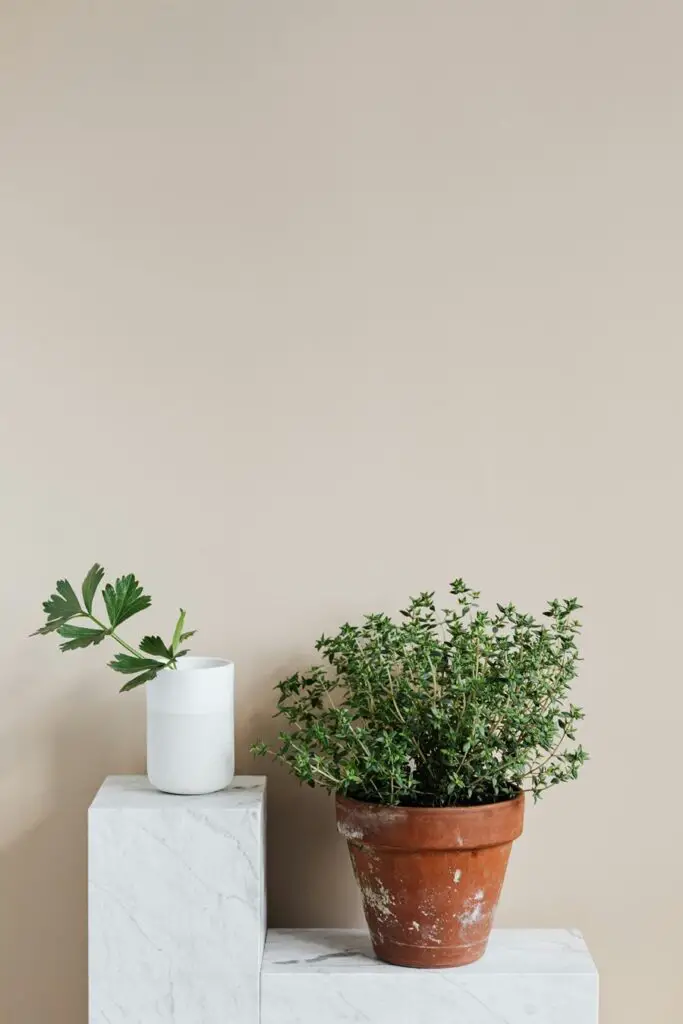
Thyme (Thymus vulgaris) is a shrub with small leaves, typically dark green in color, featuring woody stems and flowers that can vary in color from white to purple, depending on the thyme variety.
Thyme is a plant recognized for its remarkable resilience to drought and its ability to thrive in dry soil conditions. This makes it an ideal option for individuals with limited time for consistent watering or those prone to forgetfulness..
It is a relatively easy-to-grow perennial herb, especially in warm and sunny climates. This plant can grow from seeds or cuttings and requires little maintenance. With 6 hours of sunlight and well-drained soil, this plant is happy..
Basil
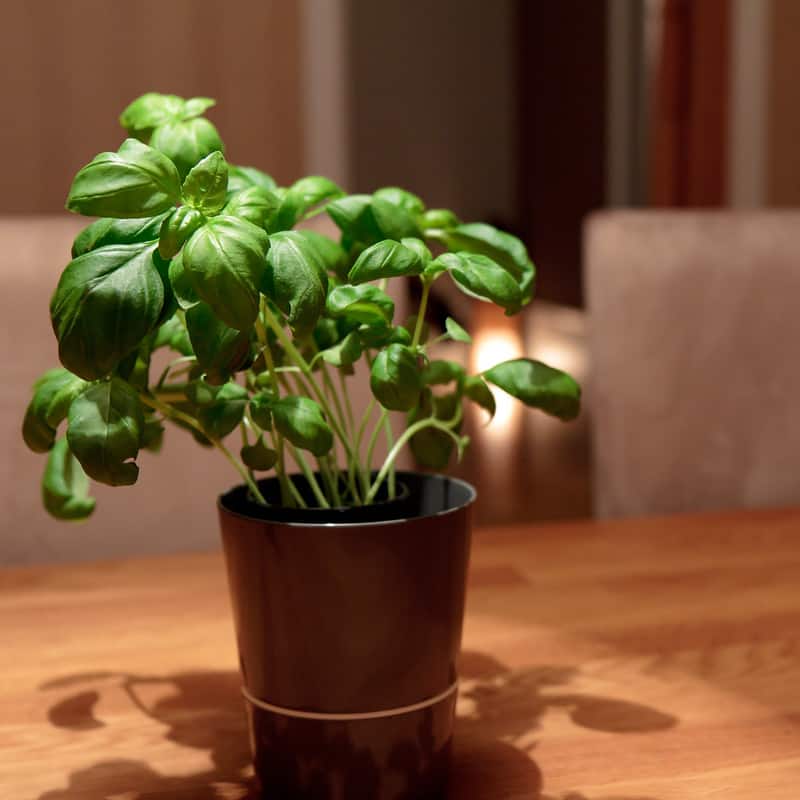
Basil (Ocimum basilicum) is a popular herbaceous plant commonly used in cooking. It has bright green leaves that can vary in shape and size depending on the variety.
Its leaves are oval-shaped, with smooth or slightly serrated edges. They have a smooth and velvety texture to the touch. These leaves carry a sweet, herbal, and slightly spicy aroma. Additionally, it produces small white flowers in spikes..
Basil is an annual plant that is relatively easy to grow in gardens or pots. It requires well-drained soil and sunlight to grow optimally.
In addition to its culinary use, basil has been used in traditional medicine for its antibacterial, anti-inflammatory, and antioxidant properties.
You may like: 9 Types of Succulents You Will Love
Cilantro

Cilantro (Coriandrum sativum) is an annual herb widely used in both cooking and traditional medicine. Cilantro is an annual plant that is relatively easy to grow from seeds.
The coriander plant has finely divided leaves and small, white flowers. At the end of its growth cycle, it produces round, brown seeds, which are also edible.
You have the option to harvest cilantro leaves as they mature, with the most favorable flavor found in the young leaves. Coriander seeds, on the other hand, are gathered once the plant reaches maturity, and the flowers have undergone the drying process.
Fenugreek

Fenugreek (Trigonella foenum-graecum) is a plant used both in cooking and for medicinal purposes.
The fenugreek plant has compound leaves and small white or yellow flowers. The seeds, which are the most utilized part of the plant, are small and angular in shape.
It can be cultivated from smeeds and adapts to a variety of climates and soils, making it an excellent choice for pots and gardens.
Fenugreek requires full sun to grow optimally. Its seeds typically germinate within 5-7 days after being planted.
During this germination stage, ensure the soil stays moist to facilitate sprouting.
It is recommended to sow them in spring or autumn, as fenugreek prefers cooler climates.
Sage

Sage (Salvia officinalis) is an aromatic and medicinal plant well-known for its diverse qualities.
Featuring silver-gray leaves and flowers in varying shades of violet, blue, or white, depending on the variety, sage is an appealing plant. Incorporating a sage plant into your garden or indoor environment not only serves a practical purpose but also enhances the visual appeal.
Sage prefers warm and sunny climates but can thrive in a variety of conditions.
It requires well-drained soil, as it does not tolerate waterlogging. You can enhance drainage by adding sand to the soil if necessary.
You can sow sage seeds directly into the soil after the last spring frost, although you can also choose to purchase young plants from a nursery and transplant them into your garden or pots.
Regular pruning stimulates denser and healthier growth. You can prune sage leaves for use in the kitchen and trim wilted flowers to encourage more blooming.
Being a resilient and easy-to-cultivate plant, sage is an ideal choice for beginner gardeners. It can thrive in a variety of conditions and requires minimal maintenance, meaning that even if you lack gardening experience, you can enjoy a healthy and productive plant.
In summary, purchasing a sage plant not only provides culinary and medicinal benefits but also adds beauty and versatility to your space.
Mint
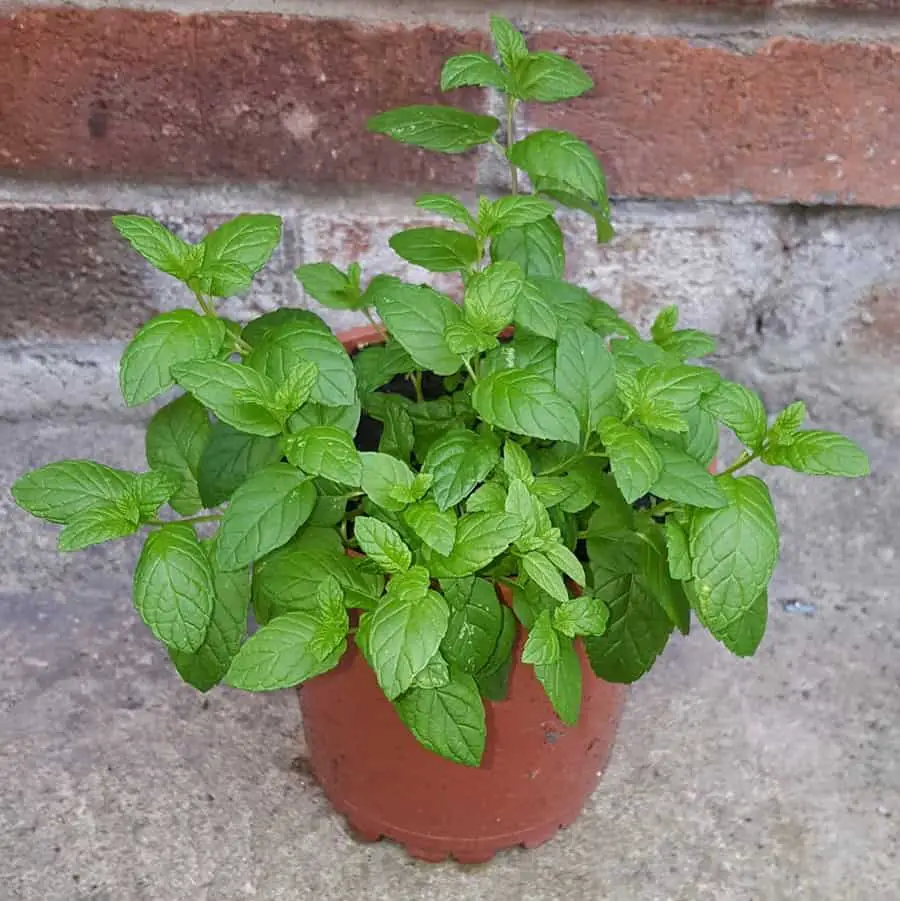
Mint leaves are opposite, simple, oval to lanceolate in shape, and have serrated edges. They are known for their rough texture and vibrant green color.
Mint leaves have a fuzzy and rough texture to the touch, attributed to the small trichomes (hairs) covering the surface.
The flowers of mint are grouped in terminal spikes and can exhibit various colors depending on the species, ranging from white and pink to purple or even blue. Mint is a perennial plant that readily propagates through underground rhizomes, making it potentially expansive in a garden setting.
It’s important to consider its invasive nature, so in some cases, it is preferred to cultivate in pots.
If you plant mint in the garden, make sure to give it enough space as it tends to spread rapidly. And if you sow it in pots, provide a container large enough to allow its growth.
You can harvest mint leaves at any time, but it’s best to do so before the plant flowers to obtain the best flavor.
Mint prefers locations with partial to full sunlight, so provide it with 4 to 6 hours of direct sunlight per day for healthy growth.
Oregano
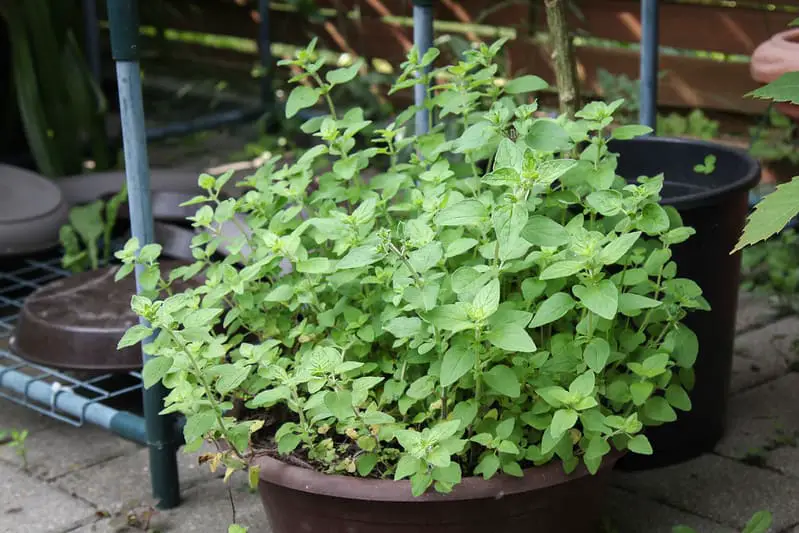
Oregano (Origanum vulgare) is an aromatic herb widely used in Mediterranean cuisine and other cuisines around the world.
It is a perennial plant in warm climates but commonly grown as an annual in colder climates.
You can propagate oregano through seeds, cuttings, or clump division. Seeds are sown in spring and germinate within a few weeks.
Oregano can grow to a height of 30 to 90 cm, depending on the variety and growing conditions.
Oregano leaves are small, oval-shaped, dark green, and arranged in opposite pairs on the stem. They have a strong aroma and an intense flavor.
Oregano leaves have a rough texture to the touch due to small trichomes covering the surface.
Oregano flowers are small and clustered in spikes. They can be white, pink, or purple, depending on the variety.
Fennel

Fennel is a perennial herbaceous plant, but it is often cultivated annually for harvesting its edible parts.
Fennel leaves are thin, feathery, and bright green. They have a distinctive aroma and an anise-like flavor.
The stem is upright, hollow, and grooved. It can branch out as the plant grows. Its flowers are small and yellow, grouped in umbels. They are attractive to pollinators such as bees and butterflies.
Fennel seeds are small, oval, and range in color from green to brown. This plant not only adds a distinctive touch to your culinary dishes but also brings beauty to your garden with its feathery leaves and striking flowers.
Chives

Chives or Allium schoenoprasum is an easy-to-grow plant and a delicious addition to your dishes. In addition to its culinary qualities, it also adds visual appeal to the garden with its colorful flowers.
The leaves are thin, cylindrical, and hollow. They have an intense green color and a mild, pleasant onion flavor.
The flowers are small and globular, with shades ranging from pink to purple. They are edible and have a flavor similar to the leaves.
Typically, the chive plant reaches heights of 20 to 30 cm, although it can vary.
You can harvest chive leaves as the plant grows. Cut the leaves near the ground to encourage new growth.
Dill
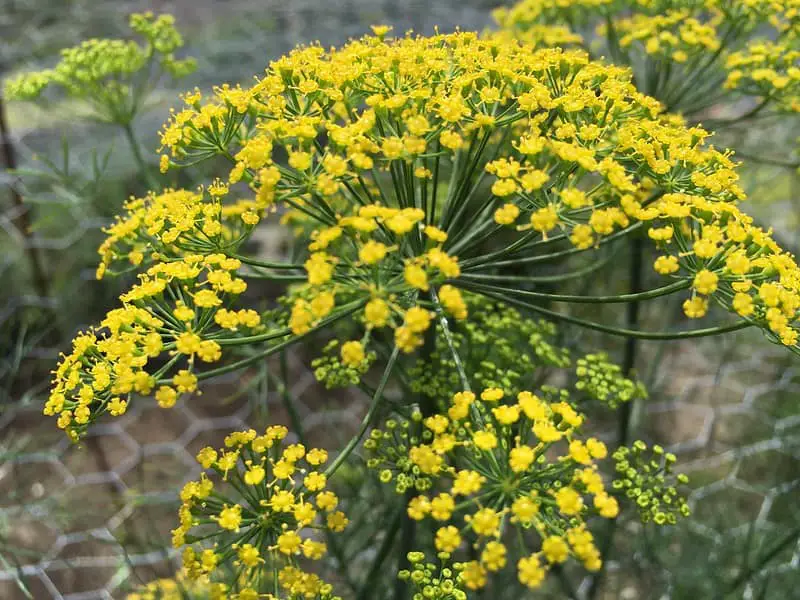
Dill is an annual plant primarily cultivated for its leaves and seeds. Dill leaves are thin and bright green.
They have a distinctive aroma and a flavor similar to fennel and anise.
The flowers are small and yellow, clustered in umbels. They attract pollinators such as bees and butterflies.
It requires regular watering to keep the soil moist, but avoid waterlogging.
Plant dill seeds or seedlings at a distance of at least 15-30 cm between each plant to allow for proper development.
Dill leaves can be harvested as the plant grows and before it blooms. The seeds are collected when the flower umbels have dried.
Growing herbs from seeds offers an accessible and satisfying way to bring freshness to your kitchen and beauty to your space. With a quick growth process, these herbs are ideal for beginner cultivators, providing not only versatile culinary ingredients but also a simple and rewarding opportunity to delve into the world of home cultivation.
